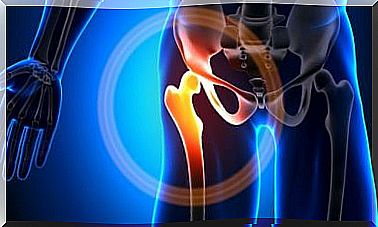What Is A Brain Hemorrhage And Why Can It Occur?
Brain hemorrhage is a serious situation that can endanger the life of the person who suffers it. It consists of bleeding inside the brain that causes blood to be lost and does not reach all parts of the organ properly.
Therefore, it is the second leading cause of stroke or cerebrovascular accident. The problem is that the mortality from cerebral hemorrhage, despite current treatments, is still very high. In addition, sequelae are frequent in people who manage to survive.
The incidence of this condition increases as you age. However, age is not the only risk factor.
What is a brain hemorrhage?
A cerebral hemorrhage, as we have pointed out in the introduction, is bleeding that occurs inside the brain. It usually causes sudden-onset neurological defects and even coma.
This is due to the lack of blood supply to other parts of the brain, since the blood does not continue its journey through the blood vessels. It is important to distinguish between cerebral hemorrhage and intracranial hemorrhage.
Intracranial hemorrhages, in addition to cerebral hemorrhages, include others that occur within the skull, but not in the brain parenchyma. For example, intraventricular, subarachnoid, subdural, and epidural hemorrhage.
Brain hemorrhage is one of the main causes of stroke. In fact, it is estimated that almost 15% of all of them are caused by this origin. In addition, it presents a very high mortality, especially in the first days.
Related symptoms
Cerebral hemorrhage, as we have just pointed out, is usually associated with a neurological defect that appears abruptly. Depending on the cause of the bleeding, it may progress very quickly (within 1 to 2 hours) or progress more slowly. In addition, the symptoms vary depending on the area that has been affected.
As in ischemic strokes, loss of strength in one half of the body is common. That is, if the bleeding has occurred in the right part of the brain, the leg and arm on the left side will be affected.
It is common for that same side to lose sensitivity or tingling appears. Speech or the ability to understand language can also be affected. Some people lose vision in one eye.
Headache, vomiting, loss of consciousness, and even coma are common. Headache and vomiting are usually associated with an increase in intracranial pressure due to the cerebral hemorrhage itself.

Main causes of brain hemorrhage
Brain hemorrhage can happen for different reasons. It seems that age is one of the most relevant factors. The incidence increases as you age and is higher in men than in women.
The main underlying cause is high blood pressure. This is because the cerebral arteries, which are small in size, are very sensitive to increased pressure.
Similarly, brain hemorrhage can be triggered by trauma. It is one of the reasons why it is more frequent in the elderly, who tend to suffer falls.
Another origin is amyloid angiopathy. It is a disease that consists of the accumulation of certain proteins in the walls of the arteries of the brain. It causes recurring bleeding, as the arteries become more fragile.
Blood disorders, specifically coagulation disorders, favor the appearance of cerebral hemorrhages. However, in most cases they are due to the use of certain drugs, such as anticoagulants.
Brain hemorrhage can also occur in young people. For example, the use of drugs such as cocaine or amphetamines increases the risk. Similarly, arteriovenous malformations are another relatively common cause.
How is a brain hemorrhage treated?
Brain hemorrhage is a medical emergency. Any symptoms or signs should seek immediate medical attention.
The first thing to do is stabilize the patient. As with any other hemorrhage, it is essential to prevent the person from going into shock .
In addition, intubation is often necessary to ensure that the patient continues to breathe adequately. Similarly, platelet concentrates or fresh plasma can be given to stop bleeding . It is indicated to do so if the person was in previous treatment with anticoagulants.
As the MSD Manual explains, vitamin K also helps reduce bleeding in these people. In cases where there is severe arterial hypertension, hypotensive drugs are indicated. However, this is very delicate, since if the tension is lowered too much the damage is aggravated.
Surgery may be needed to treat the brain hemorrhage. The intervention consists of extracting the accumulated blood and thus reducing intracranial hypertension. It is reserved for cases in which the bleeding has produced progressive neurological deterioration or if it affects the brainstem.
Possible complications and prognosis
A brain hemorrhage carries a very high risk of mortality. In fact, the mortality rate is estimated to be around 40%. In addition, people who survive often have sequelae.
Most complications arise from the expansion of the hematoma or the edema that forms around it. Also due to the damage to brain tissue itself due to the lack of blood supply. There may be seizures, an inability to communicate, and vision problems.
Similarly, survivors often have severe headaches and loss of sensation and mobility. The prognosis is poor, although it varies depending on the severity of the bleeding.
Either way, most patients require further therapy. Rehabilitation therapies can be directed to improve speech, mobility, or to regain other functions.

Brain bleeding is severe
Anyone who survives a brain hemorrhage needs to consider certain aspects. From that moment on, it is essential to keep a strict control of blood pressure. It is important to adopt a healthy lifestyle to prevent a new episode.









